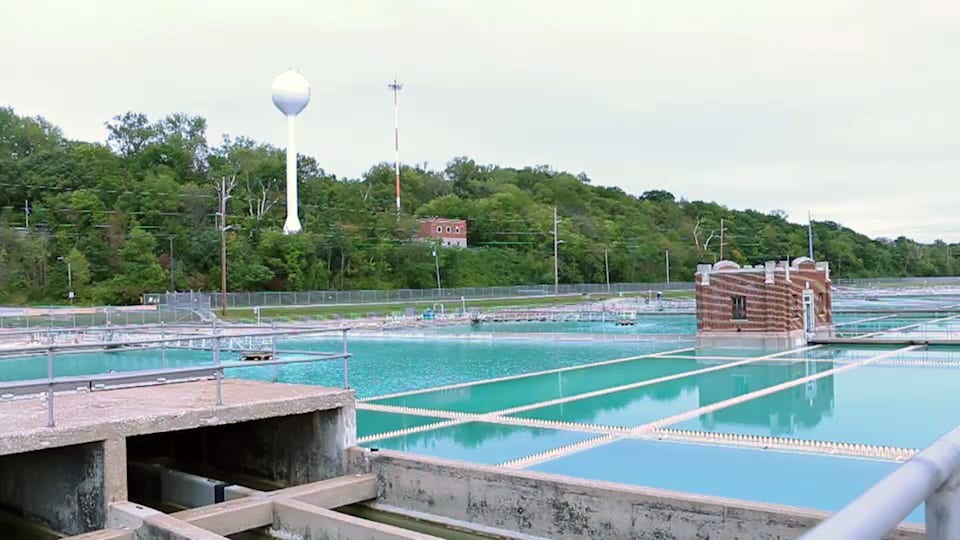What’s In Our Tap Water? You Asked and We Took a Dip
 The Kansas City water treatment plant makes Missouri River water drinkable for about 660,000 area residents. (Lauren Langdon | Flatland)
The Kansas City water treatment plant makes Missouri River water drinkable for about 660,000 area residents. (Lauren Langdon | Flatland)
Published April 16th, 2018 at 6:00 AM
By Lauren Langdon
As the “Big Muddy” winds its way through Kansas City, it might be hard to believe that approximately 660,000 residents rely on the Missouri River for their drinking water — after it has been treated, of course.
But, did you know that the treatment process itself can introduce potentially hazardous contaminants to the water?
That’s something curiousKC discovered as it researched this question: From a proper scientific and medical perspective, what is in our tap water and is it appropriate for the human body of adults and children? The questioner did not provide a name, and attempts to reach them by email were unsuccessful, but the inquiry left us thirsting for an answer, so we pursued it anyway.
And, as it turns out, in July, the Environmental Working Group, released a database that tracks the contaminants in tap water. The database is searchable by ZIP code or utility name.
“Tap water is not pure distilled water, it has chemicals in it, and that’s not a bad thing,” said David Greene, manager of laboratory services for Kansas City Water Services. “Mineral water has chemicals in it, and they’re desirable.”
Turning Missouri River water into tap water can take four days. First, the clay and visible particles are removed, and then the water is disinfected using chlorine. This treatment process creates five of the six contaminants detected above health guidelines at KC Water.
Hexavalent chromium, commonly called chromium-6, was also detected above health guidelines, but there is currently no federal limit for the contaminant. Chromium-6 naturally occurs in the Missouri River.
For contaminants like chromium-6 that are not regulated by the federal Safe Water Drinking Act, Greene said risk assessment can take a while to catch up. These contaminants are detected on very small levels, and Greene said the database should not alarm consumers.
While it’s up to KC Water to turn river water into tap water, consumers can help by minimizing their impact on the environment and the waterways.
“It’s important for everybody to think about protecting the source water,” Greene said. “What can we do at home to keep from pouring chemicals down the sink or over applying lawn fertilizers, things like that.”
— Lauren Langdon reported this as a student in a multimedia reporting class at The University of Missouri.



Chromium (hexavalent): a “cancer-causing chemical”, can enter tap water through industrial or natural sources, “no legal limit set” ?????
Remember this ????